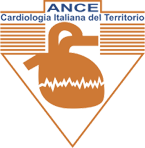Abstract
Background Risk stratification in asymptomatic patients remains by far the most important yet unresolved clinical problem in the Brugada syndrome (BrS).
Objectives This study sought to analyze the usefulness of electrocardiographic parameters as markers of sudden cardiac death (SCD) in BrS.
Methods This study analyzed data from 347 consecutive patients (78.4% male; mean age 45 ± 13.1 years) with spontaneous type 1 BrS by ECG parameters but with no history of cardiac arrest (including 91.1% asymptomatic at presentation, 5.2% with a history of atrial fibrillation [AF], and 4% with a history of arrhythmic syncope). Electrocardiographic characteristics at the first clinic visit were analyzed to predict ventricular fibrillation (VF)/SCD during follow-up.
Results During the follow-up (48 ± 38 months), 276 (79.5%) patients remained asymptomatic, 39 (11.2%) developed syncope, and 32 (9.2%) developed VF/SCD. Patients who developed VF/SCD had a lower prevalence of SCN5A gene mutations (p = 0.009) and a higher prevalence of positive electrophysiological study results (p < 0.0001), a family history of SCD (p = 0.03), and AF (p < 0.0001). The most powerful marker for VF/SCD was a significant S-wave (≥0.1 mV and/or ≥40 ms) in lead I. In the multivariate analysis, the duration of S-wave in lead I ≥40 ms (hazard ratio: 39.1) and AF (hazard ratio: 3.7) were independent predictors of VF/SCD during follow-up. Electroanatomic mapping in 12 patients showed an endocardial activation time significantly longer in patients with an S-wave in lead I, mostly because of a significant delay in the anterolateral right ventricular outflow tract.
Conclusions The presence of a wide and/or large S-wave in lead I was a powerful predictor of life-threatening ventricular arrhythmias in patients with BrS and no history of cardiac arrest at presentation. However, the prognostic value of a significant S-wave in lead I should be confirmed by larger studies and by an independent confirmation cohort of healthy subjects.
Journal of the American College of Cardiology
